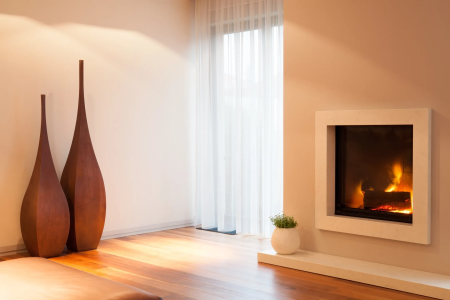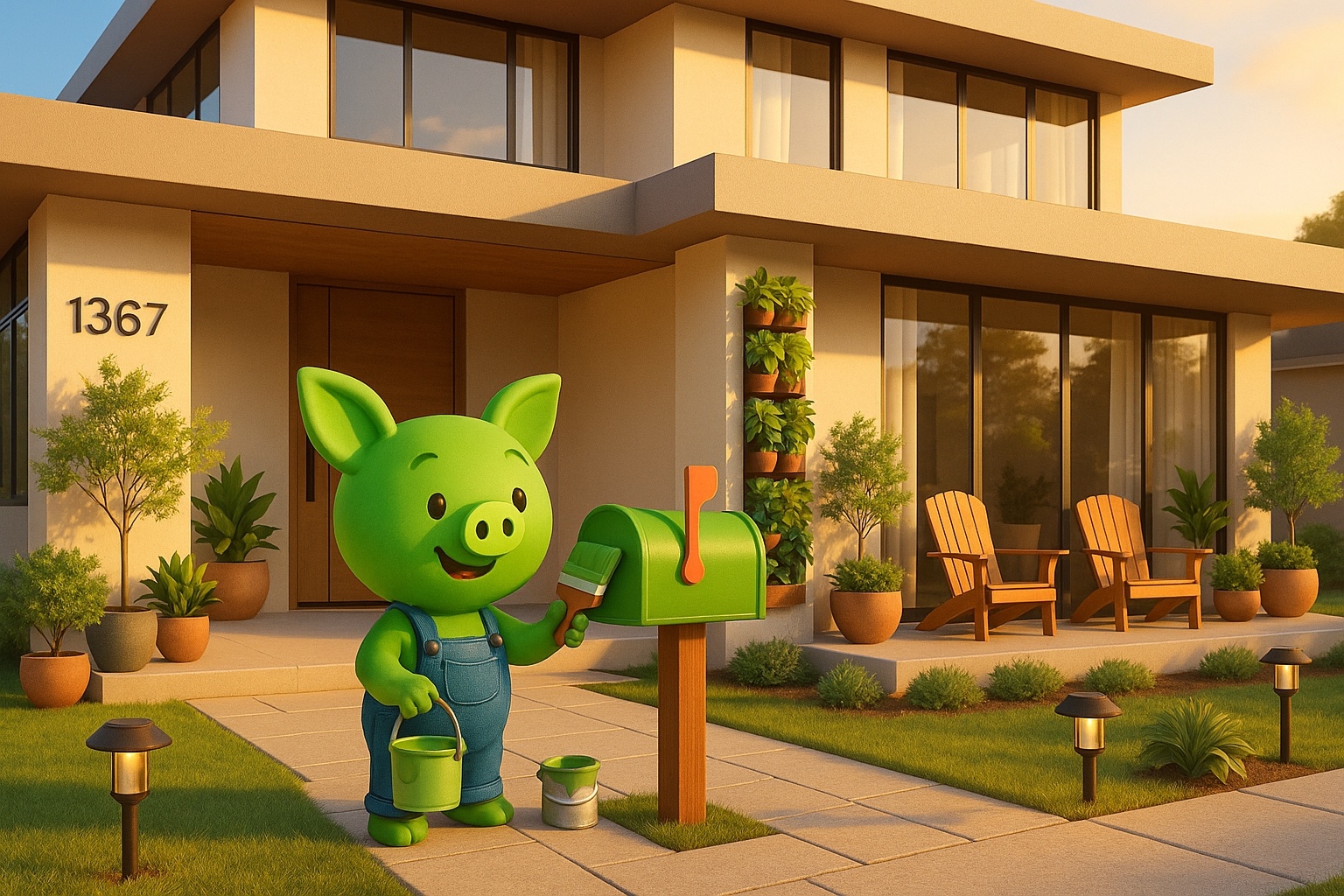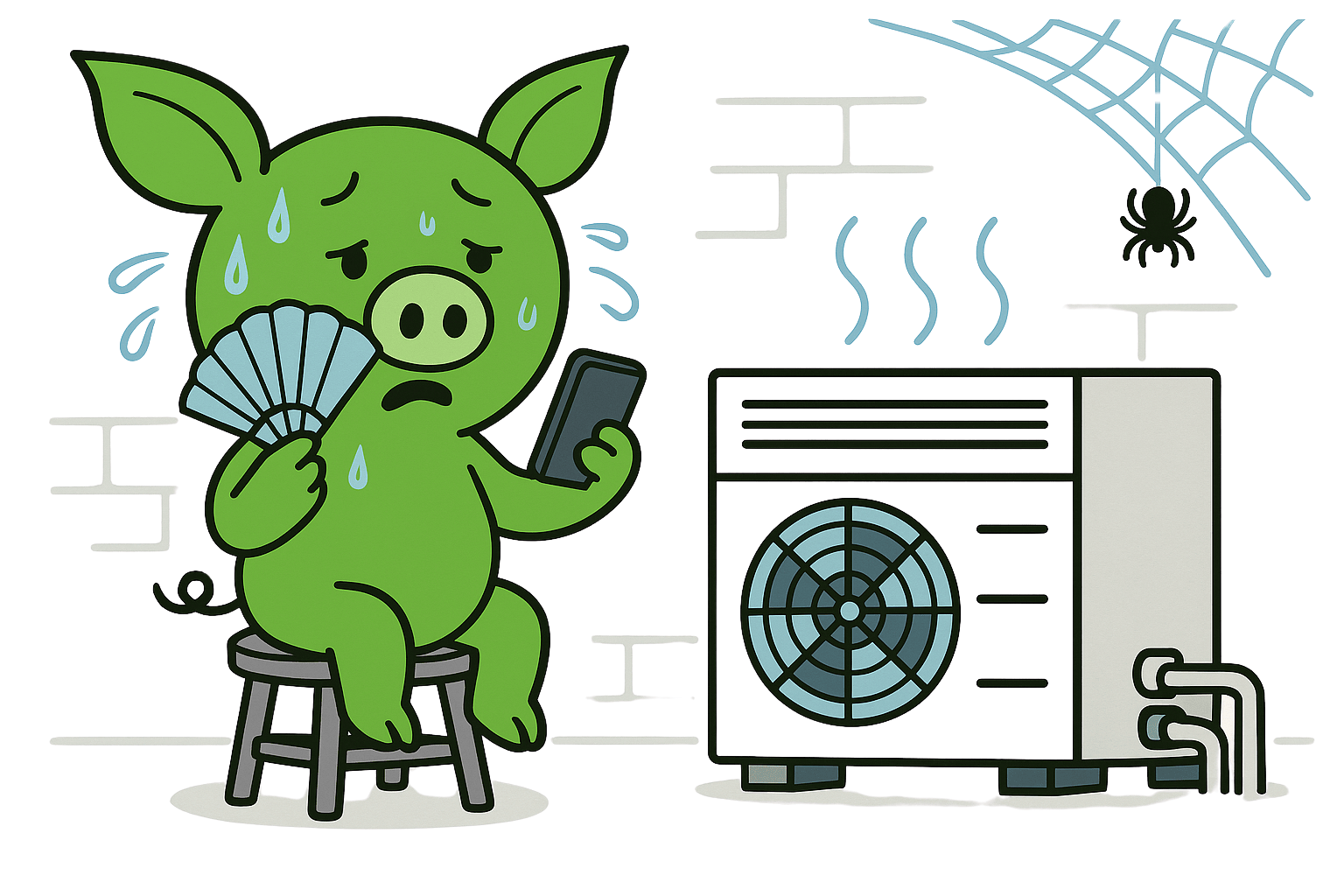8 Cozy and Eco-Friendly Fireplace Tips for Efficiency in Your Green Home

1. Choose the Right Wood
Selecting the right wood is critical for maximizing heat and minimizing harmful emissions.
- Seasoned Hardwoods: Opt for hardwoods like oak, maple, or cherry, which burn hotter and longer, producing more heat and less creosote compared to softwoods like pine or cedar.
- Local Sourcing: Purchase firewood locally to reduce transportation emissions and prevent the spread of invasive species.
- Emerald Ash Borer Alert: According to the USDA, transporting firewood across county lines can spread invasive pests like the Emerald ash borer, which has destroyed millions of ash trees and cost the U.S. over $1 billion in control efforts. In many states, moving firewood across regions is illegal.
By choosing sustainable, local wood, you protect both your fireplace and your local environment.
2. Store Firewood Properly
Proper storage is essential to keep your firewood dry and efficient.
- Ventilated Storage: Store wood in a well-ventilated area, raised off the ground, and covered to protect it from rain and snow.
- Holzhaufen Technique: For an old-world solution, try a holzhaufen, a circular wood stack topped with a bark “roof” to naturally keep wood dry. This German technique is as functional as it is picturesque. Watch this guide to learn proper holzhaufen stacking techniques for maximum stability.
Keeping your firewood dry ensures cleaner burning with less smoke and particulate matter.
3. Clean and Inspect Your Chimney Regularly
A well-maintained chimney is key to efficient and safe fireplace use.
- Creosote Prevention: Over time, creosote—a flammable residue—builds up in chimneys, posing a serious fire hazard.
- Annual Inspections: Schedule yearly inspections and cleanings by a professional chimney sweep to maintain optimal performance.
- Neighborly Savings: Coordinate with neighbors for group chimney inspections. Using platforms like Pigybak, you can save money and help contractors book more jobs in one trip, reducing emissions and costs for everyone.
A clean chimney isn’t just about safety—it improves your fireplace’s efficiency and helps maintain good air quality.
4. Invest in a Fireplace Insert
For a significant efficiency boost, consider installing a fireplace insert.
- How It Works: Fireplace inserts trap heat and release it into your home while reducing heat loss through the chimney.
- Eco-Friendly Heating: These modern devices burn cleaner, use fuel more efficiently, and offer better heat output compared to traditional open fireplaces.
Fireplace inserts are a smart, eco-conscious upgrade that enhances comfort while lowering your environmental footprint.
5. Master Proper Fire-Building Techniques
The way you build a fire affects how much heat your fireplace produces.
- Start Small: Use kindling and newspaper to build a small, hot fire before gradually adding larger logs.
- Maintain Airflow: Avoid overloading the fireplace to ensure proper ventilation and reduce smoke.
- Use a Grate: Elevate logs with a fireplace grate to promote better combustion.
- Monitor Temperature: Aim for combustion temperatures around 1,100°F for maximum efficiency. Attach a magnetic temperature gauge to your fireplace to keep track.
A properly built fire produces more heat with less smoke, keeping your home cozy and clean.
6. Install Glass Doors
Glass doors are a simple but effective way to improve fireplace efficiency.
- Reduce Heat Loss: Glass doors prevent warm indoor air from escaping up the chimney when the fireplace isn’t in use.
- Block Drafts: They also act as a barrier, keeping cold air from entering your home.
Pro Tip: Keep the doors open while the fire is burning to ensure proper airflow, then close them once the fire is out.
7. Explore Alternative Fuel Sources
Traditional wood-burning fireplaces are charming but not always the most eco-friendly option. Consider switching to alternative fuels:
- Natural Gas or Propane Inserts: These produce fewer emissions and are highly efficient for heating.
- Pellet Stoves: Use compressed wood or biomass pellets, offering a cleaner and more sustainable option.
- Electric Fireplaces: While not as traditional, electric models offer a zero-emissions alternative with customizable heat and flame effects.
By exploring alternative fuel sources, you can enjoy the warmth of a fireplace with a reduced carbon footprint.
8. Embrace Responsible Fireplace Practices
To minimize environmental impact while enjoying your fireplace, adopt these additional practices:
- Burn Responsibly: Avoid burning trash, glossy paper, or treated wood, which release harmful chemicals into the air.
- Optimize Heat Use: Use your fireplace as a supplemental heat source rather than the primary one.
- Seal Your Chimney: When not in use, use a chimney balloon or flue seal to prevent heat loss through the chimney.
How Pigybak Can Help
Keeping your fireplace safe and efficient doesn’t have to be a hassle. With Pigybak, you can:
- Find Local Masons: Post your fireplace inspection or repair needs on Pigybak and connect with reliable professionals in your area.
- Coordinate with Neighbors: Use Pigybak’s Neighborhood Savings feature to team up with neighbors for chimney inspections and repairs, saving time and money.
- Focus on Eco-Friendly Options: Filter contractors who specialize in sustainable practices, from installing fireplace inserts to improving insulation.
Download Pigybak today to prepare your fireplace for the season with ease and efficiency.
Conclusion: Warmth with a Green Touch
Fireplaces are more than just a source of warmth—they’re a centerpiece of comfort and tradition in our homes. By adopting eco-friendly practices like choosing the right wood, maintaining your chimney, and exploring alternative fuels, you can enjoy your fireplace responsibly.
This fall, let’s embrace the cozy glow of a fire while minimizing its environmental impact. With tools like Pigybak, preparing your fireplace for the season has never been easier. Stay safe, stay warm, and stay green with these fireplace tips for your eco-friendly home.


